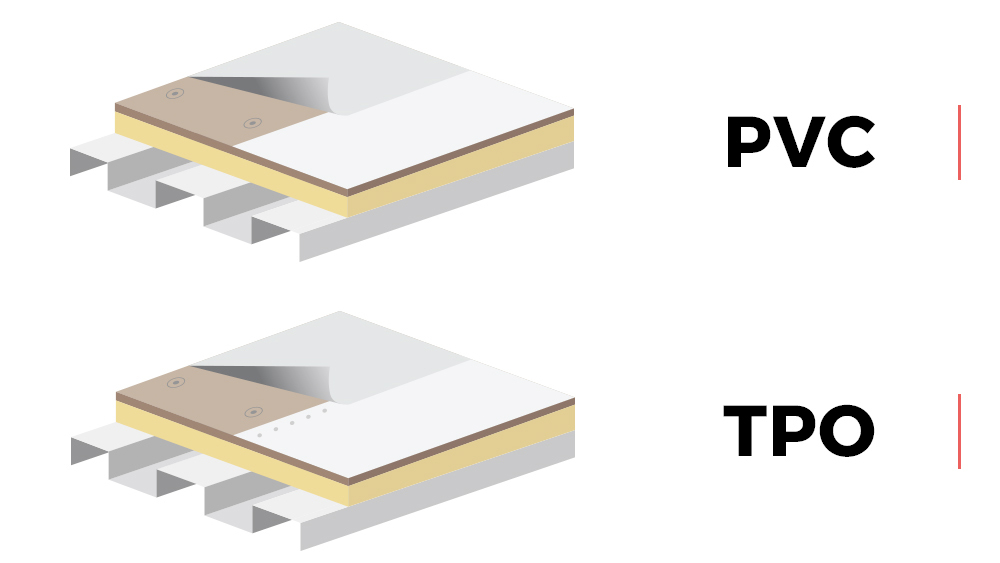
What are Thermoplastic Membranes
Single-ply roofing membranes fall into two classes —thermoplastic membranes, such as thermoplastic polyolefin (TPO) and polyvinyl chloride (PVC) and thermoset membranes, such as ethylene propylene diene monomer (EPDM) and Hypalon, and
What is TPO Roofing? Thermoplastic Polyolefin is a single-ply roofing membrane that is one of the fastest growing commercial roofing systems on the market. TPO roofing systems are made up of a single layer of synthetics and reinforcing scrim that can be used to cover flat roofs.
PVC roofing or polyvinyl chloride is a single-ply roofing solution used on commercial or industrial roofs that are flat or low sloped. PVC or polyvinyl chloride, is the third-most widely produced synthetic plastic polymer.
Both TPO and PVC membranes are smooth, highly resistant to chemicals and to water related damage. However, neither of these membranes is easy to coat.
Use of high amounts of liquid plasticizers can be a bigger problem for PVC membranes than their own somewhat slick surfaces. TPO membranes are thus a better option.
Higher chemical resistance may become a disadvantage, as it inhibits the suitable primer development. These systems thus require use of special primers for coating. However, application of these primers is not very common.
Another important thing to note is that the TPO and PVC membranes can be easily misidentified.
Off the rack, no you cannot tell the difference visually. You can ‘feel’ a difference- PVC feeling more waxy, and feeling more pliable than TPO. PVC also has a distinct ‘PVC Smell’ to it.
Since both these membranes require different coatings and primers, we provide a precautionary test patch before coating your roof with a white membrane.
Schedule Your Free Consultation
Our project specialist will call you to get the details of your project. They’ll answer all your questions and help you select the products that are right for your project and your budget.

